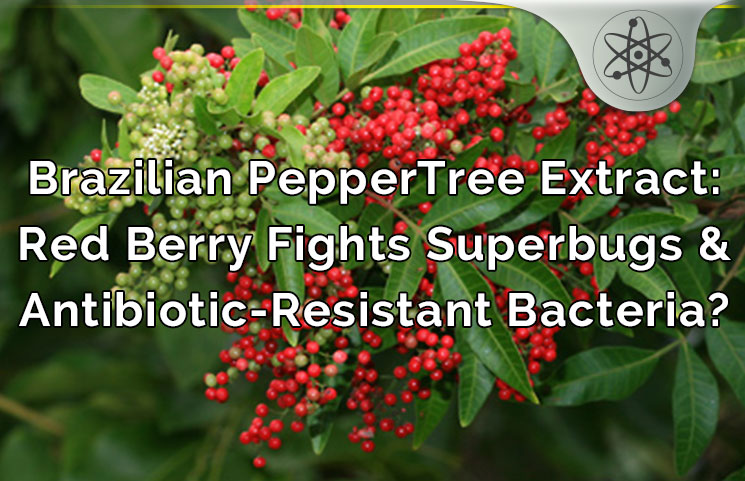Could a noxious weed from Brazil be the secret to fighting superbugs? New research shows that the Brazilian peppertree has some surprising bug-fighting power.
Superbugs have been a growing concern for the human race: basically, modern antibiotics have been effective at killing the bacteria and diseases we know today. But we’re also breeding “superbugs” that are resistant to bacteria. These superbugs are a growing concern around the world. If a superbug is resistant to all known drugs and antibiotics, it could have catastrophic implications for the human race.
That’s why researchers are excited about the Brazilian peppertree. New research shows the Brazilian peppertree has the power to knock out antibiotic-resistant bacteria.
The Brazilian PepperTree comes in the form of a berry. In the United States, it’s known more as a weed than as a medicinal plant. What makes the berry so powerful? Keep reading to find out why researchers are excited about the weed.
Amazon Traditional Healers Have Used Brazilian PepperTree for Centuries
Researchers at Emory University only recently discovered the power of the Brazilian peppertree. However, traditional healers in the Amazon jungle have been using the plant for centuries.
The new report published in the journal Scientific Reports discusses why the Brazilian peppertree is such a valuable bacteria-fighting compound. Researchers at Emory University “pulled apart the chemical ingredients of the berries and systematically tested them against disease-causing bacteria to uncover a medicinal mechanism of this plant”, explains assistant professor Cassandra Quave in an interview with ScienceDaily.com
What did they find? Researchers found that the berry is rich with flavones. When an extract made from the berries is given to mice infected with methicillin-resistant Staphylococcus auereus (MRSA), it inhibits the formation of skin lesions.
Researchers found that their berry extract worked not by killing the MRSA bacteria – which is how traditional antibiotics work – but by repressing a gene that allows the bacteria cells to communicate with one another.
By blocking cells from communicating with one another, the cells cannot take collective action and “team up” against the body. This bacteria-fighting process is known as quorum quenching.
“It essentially disarms the MRSA bacteria, preventing it from excreting the toxins it uses as weapons to damage tissues,” Quave says. “The body's normal immune system then stands a better chance of healing a wound.”
Why is the Brazilian PepperTree So Important for Human Health?
Researchers have been searching for ways to fight antibiotic-resistant bacteria for decades. The number of bacteria resistant to antibiotics worldwide has been growing rapidly over the years. These infections, according to a report by the Centers for Disease Control and Prevention (CDC), cause 2 million illnesses and 23,000 deaths in the United States every year.
The CDC went on to describe antibiotic-resistant infections a “fundamental threat” to global health and safety. It’s estimated that these bacteria cause 700,000 deaths a year worldwide, with that number expecting to grow to as many as 10 million deaths a year by 2050.
The amazing thing about the Brazilian peppertree is that it works without killing the bacteria. Traditional antibiotics have encouraged the breeding of new “superbugs” by only killing off the weakest bacteria.
With the Brazilian peppertree, it works by preventing the compounds from teaming up, which gives the human immune system a fighting chance against the infection.
Where Can You Find the Brazilian PepperTree?
Fortunately for you, the Brazilian PepperTree isn’t just found in the depths of the Amazonian rainforest, nor is it found on some remote mountain top. The species (Schinus terebinthifolia) is native to South America, but can be found in subtropical climates around the world.
In the United States, the Brazilian peppertree can be found in Alabama, Georgia, Texas, and California, for example. You can spot the plant by its distinctive dense thickets that crowd out native species.
It’s sometimes called Florida holly or broad leaf peppertree in the United States, where it’s known more as a noxious, annoying, invasive weed than as a powerful medicine. It’s been described as the bane of Florida homeowners for years.
Could an innocuous weed be the secret to solving the problem of antibiotic-resistant bacteria? Stay tuned for more information about the Brazilian peppertree as research continues to move forward.









